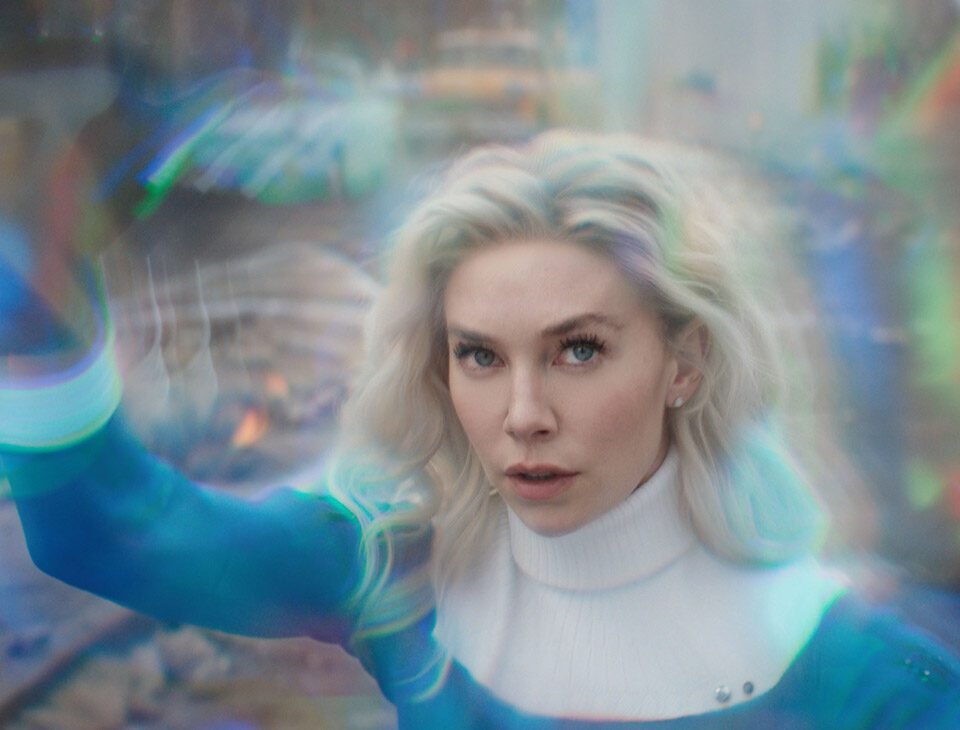


‘Thelma’ Review: June Squibb Takes Charge in Sweet, Spirited Action Movie for Seniors
January 21, 2024


‘Stress Positions’ Review: Even John Early Can’t Whip Up Much Excitement in Frantic Queer Pandemic Comedy
January 22, 2024The ‘Xena: Warrior Princess’ actress creates a sketchy portrait of Margaret Moth in a film premiering at Sundance.
Never Look Away
Heartfelt but shallow.
Like most journalists behind the camera, Margaret Moth was never a household name or face, despite working for CNN in war zones around the world for two decades. No viewer would have guessed, as Lucy Lawless reveals in Never Look Away, that Moth’s dramatic appearance matched the tumultuous events of her life. She had heavy, Goth eyeliner and spiky jet black hair, and multiple lovers wherever she went. As a cameraperson in the early 1990s, she covered wars from the Persian Gulf to Tbilisi, Georgia. A montage in the opening credit sequence shows just how violent that was, in scenes full of explosions and terrified civilians running down the streets. In 1992, she was shot by a sniper in Sarajevo, losing part of her jaw, yet she recovered and went on reporting almost until she died of cancer in 2010.
Lawless, directing her first film, takes her time and backs into the most revealing and distinct elements of the story. She begins with lovers and colleagues talking about Moth, interspersed with more video of war. We can assume that the footage was shot by Moth, but we’re left to guess whether some of it was not. One of the main talking heads is Jeff Russi, who began his affair with Moth when he was 17 and she was in her 30s, reporting for a local station in Houston after relocating from her native New Zealand. “We’d do acid every weekend,” Russi says. Videos and photos show Moth in her apartment, sitting smoking a pipe or dancing around in a caftan, the picture of someone seeking attention.
Eventually, the film lands on something: a terrifying sketch Moth drew as a child, black crayoned images of children in closets that evoke Edward Munch at his darkest. Three of Moth’s siblings appear, talking about how their parents beat them, but their brief remarks only raise more questions, leaving us to wonder what they didn’t or perhaps couldn’t bring themselves to say.
At last we hear, from Russi, how Moth invented herself, changing her name from Margaret Wilson to Margaret Gipsy Moth, dying her blonde hair black. All that information would have been useful in the film’s dragging first section. It sheds at least some light on her self-destructive impulses, including her long, obsessive affair with a French heroin addict.
The documentary picks up when it arrives at the most dramatic and tragic moment of Moth’s life. Lawless’ design team created a diorama of “sniper alley,” the street where Moth was shot. It is an effective three-dimensional model because it is eerily empty, focused on the white van Moth was in with three colleagues, including Kotsonis. He recalls hearing her scream when she was shot and seeing her holding her hand to her face. He was not aware that she was actually holding her jaw in place and that she had lost part of her tongue.
Other recent, fine films have tackled similar material and never gotten the attention they deserved, including the documentary about women photojournalists (Moth among them), No Ordinary Life and the drama A Private War (2018) with Rosamund Pike as Marie Colvin, killed while reporting in Syria. For all its heartfelt purpose, Never Look Away is a lesser addition to that category.





